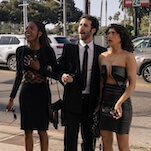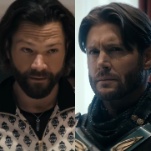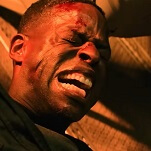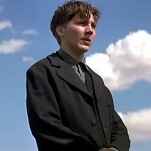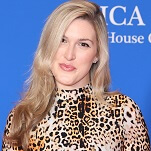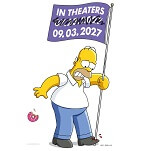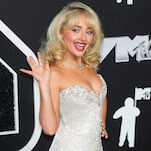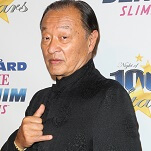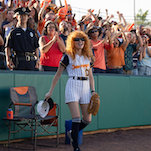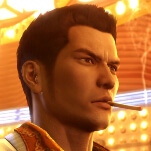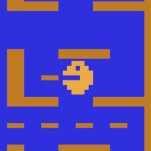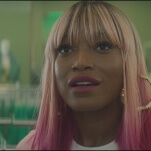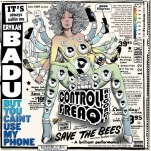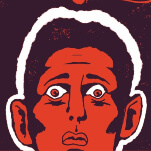Each week, Big Issues focuses on a newly released comic book of significance. This week, it’s Extraordinary X-Men #1. Written by Jeff Lemire (Descender, All-New Hawkeye) with art by Humberto Ramos (The Amazing Spider-Man, X-Men), inker Victor Olazaba (The Amazing Spider-Man, Uncanny X-Men), and color artist Edgar Delgado (Superior Spider-Man, Darth Vader) the X-Men’s “All-New, All-Different Marvel” debut does major damage to the mutant population. (Note: This review reveals major plot points.)
Marvel’s X-Men have always had a target on their heads, but now the publisher is pointing the gun. Since the beginning of 2013’s “Inhumanity” event, mutants have been getting gradually less attention as Marvel pushes the Inhumans into the X-Men’s former role, a strategy that many have speculated is a hostile response to Fox owning the film rights to mutant characters. In a Nerdist interview last year, long-time X-writer Chris Claremont stated that the X-Men office was forbidden to create new characters because they become Fox property, and Marvel doesn’t want to promote Fox material. While there has been no formal word from any of the editors or creators that have a direct role in the X-Men’s post-“Inhumanity” status quo, the treatment of Fox-owned properties at Marvel Comics supports Claremont’s claim.
The Fantastic Four are a Fox property, and Marvel canceling the team’s ongoing series earlier this year can be easily seen as a big “fuck you” to a studio that was already having plenty of trouble with its rushed superhero reboot. There’s no Fantastic Four series planned for the current “All-New, All-New Marvel” relaunch, and the team has been dissolved in the Marvel universe. The Human Torch has joined the Inhumans, the Thing is with the Guardians Of The Galaxy, and Reed Richards, Sue Storm, and their children are currently unaccounted for in the post-Secret Wars comics landscape. It’s a lot easier to dismantle the Fantastic Four than the X-Men, though; the mutant cast is larger and the X-titles are more popular, so Marvel has had to gradually cut back on promoting the property.
The idea that Marvel would cut the X-Men from its comics line-up used to seem far-fetched because the mutant team has always sold far better than the Fantastic Four. But the unpleasant, alienating Extraordinary X-Men #1 reads like a sprint to extinction. After a far-too-brief period of mutant resurgence following the Avengers Vs. X-Men crossover, Marvel has returned to a “no more mutants” direction with the help of the Terrigen mist that creates Inhumans. It turns out Terrigen is fatal to mutants, and if they happen to survive exposure, they’re sterilized so they can’t have any mutant offspring. It’s an aggressively bleak angle for the mutants’ future, and one that is especially disheartening when Brian Michael Bendis ends his X-run on an uplifting note this week.
The much-delayed Uncanny X-Men isn’t a particularly good issue—it focuses on Bendis’ regrettable characterization of Beast and features an extremely problematic coming-out conversation between teen and adult Bobby Drake—but it ends with a moment that celebrates the expansive history of the X-Men, assembling all the mutants for a speech from Cyclops on the steps of the Lincoln Memorial. The monologue isn’t as inspirational as Bendis wants it to be: Cyclops’ overall message is “humans don’t have to be afraid of mutants because we can gather in one place and not kill them or each other.” But knowing the future, the issue could have ended with a wave of Terrigen killing off the auxiliary characters and sterilizing the ones that still have large enough fan bases to keep selling comics. Extraordinary X-Men #1 takes place eight months after the events of Bendis’ finale, and in that time, Cyclops did something so horrible that mutants are hated more than ever before. The characters talk about what Cyclops did but don’t actually reveal what he did, resulting in clunky, frustratingly vague dialogue.
Jeff Lemire is a writer who thrives when he has creative freedom, and the quality of his superhero work dips dramatically when he’s weighed down by editorial restrictions. His early work on DC titles like Superboy, Animal Man, and Frankenstein, Agent Of S.H.A.D.E. allowed him to think outside the box with his superhero narratives. He peaked at DC writing Green Arrow for artist Andrea Sorrentino, drawing inspiration from Matt Fraction and David Aja’s Hawkeye and the CW’s Arrow TV series for a thrilling, visually experimental run. Lemire’s last year at DC Comics was spent writing the entertaining but generic Justice League United and working on the team behind the disappointing weekly series The New 52: Futures End, a decline that Lemire ended by choosing not to renew his exclusive contract with the publisher.
Freed from his corporate obligations, Lemire flourished in 2015. He launched a new creator-owned Image series, Descender, with artist Dustin Nguyen, another DC creator who didn’t renew his exclusive contract; Sony picked up the movie rights for Descender before the first issue even hit stands. He started working for Valiant Comics, co-writing the blockbuster event The Valiant with friend and frequent collaborator Matt Kindt, and penning the chilling psychological thriller Bloodshot Reborn. He also took the reins of Marvel’s flagship archer character with All-New Hawkeye, maintaining the distinct perspective established by Fraction and Aja while incorporating different narrative and artistic styles and techniques. (Lemire and artist Ramón Pérez return with the second volume of All-New Hawkeye next week.) Lemire’s career has gathered some incredible momentum this year, which makes Extraordinary X-Men all the more underwhelming.
Marvel needs to find a new role for the X-Men as it situates the Inhumans as a mutant substitute for the larger Marvel Universe, and it does so by making the X-Men the new Inhumans. The Jean Grey School has become X-Haven, a hidden sanctuary for mutants much like the Inhumans’ Attilan, and Storm is fulfilling a Medusa-esque duty as the regal female leader with the dramatic hair. An absent revolutionary wanted for actions that have changed the way the world reacts to his people, Cyclops is playing a similar part to the one Black Bolt had at the start of “Inhumanity,” a strange decision that erases any of the positive character development accomplished during Bendis’ run. For decades, the Inhumans’ isolation was one of their defining qualities, and now Marvel is using the Inhumans’ Terrigen mists to force the X-Men to isolate themselves from the rest of the world.
Jeff Lemire’s best superhero work focuses on character introspection and atmosphere, two qualities Extraordinary X-Men sorely lacks. The art team of penciler Humberto Ramos, inker Victor Olazaba, and colorist Edgar Delgado brings a lot of energy to the page, but the cartoonish exaggeration of Ramos’ linework is at odds with the dreary seriousness of Lemire’s script. The most effective scene in the issue is the introduction of Colossus working the fields of his old Russian home, the only time the creative team slows down to situate the reader in an environment and a mood. The art beautifully conveys the sprawling countryside, and Lemire injects some much-needed humor into the script as Piotr scares off a bear and shares a drink with his sister Illyana.
Those moments of levity are brief, though, and the rest of the issue is bogged down by grim plot developments and characterizations. Typically jovial characters like Iceman and Nightcrawler aren’t enjoying themselves in any way here, which makes sense considering the rampant death and sterilization of their people, but sucks all the charm and fun out of their personalities. The scene showing a swashbuckling showdown between Nightcrawler and a new group of villains pairs vibrant, dynamic artwork with a script that has the mutant quoting the Book Of Revelations, diminishing the excitement of the fight with awkward, overly gloomy dialogue.
Lemire’s characterization of Storm is also off. She sounds so much like Professor X that it gives the impression that the X-Men’s dead mentor has transferred a part of his consciousness to his pupil. (Crazier things have happened.) Storm begs Jean Grey to rejoin the X-Men by telling her she’s the heart of the team and the embodiment of Charles Xavier’s dream, and this strained scene thrusts unjustified importance on a character. Much of this first issue is forced: the characterizations, the exposition recapping the eight-month gap, the dour tone, the cliffhanger resurrecting Wolverine by introducing Old Man Logan to the main Marvel timeline.
It should surprise no one that Wolverine is back just two years after Marvel made an entire event around his “death,” and transitioning the character into his Old Man Logan iteration is a preemptive move to cash in on the cinematic future for the character. At this year’s Comic-Con International, Hugh Jackman teased that the next Wolverine film would involve Old Man Logan, so of course Marvel would push that version of the character in the comics. Wolverine and Deadpool are the two Fox properties that Marvel has no problem promoting because they are such big money makers. The arrival of Old Man Logan allows Marvel to keep the comics character in line with what’s ahead on screen while not technically resurrecting the Wolverine it killed off.
It’s all very calculated, and the line-ups for the three “All-New, All-Different Marvel” X-books are mostly comprised of characters with a big-screen presence: Extraordinary X-Men’s Storm, Jean Grey, and Nightcrawler are appearing in X-Men: Apocalypse while Colossus is appearing in Deadpool (and Wolverine may be appearing in both). Uncanny X-Men’s Magneto, Mystique, and Psylocke are also in X-Men: Apocalypse, along with All-New X-Men’s Cyclops, Angel, Beast, and Genesis, who is a teen version of the film’s titular antagonist. Unlike Fox’s box-office bomb Fantastic Four, the X-Men have a proven track record in theaters, and even though Marvel may not love promoting Fox properties, it’s still going to capitalize on them as long as the financial benefits are there.
The problem is that there’s nothing new being done with the X-Men. The “All-New, All-Different Marvel” regurgitates past ideas of both the X-Men and their Inhuman rivals to backtrack on recent positive changes, sending the mutants back to a miserable place they’ve already been, which is now even worse than before. The Extraordinary X-Men team may have a curveball waiting that could dramatically change the direction of the title, but if Marvel’s mutants continue on the path paved by this first issue, they may not survive the experience.

